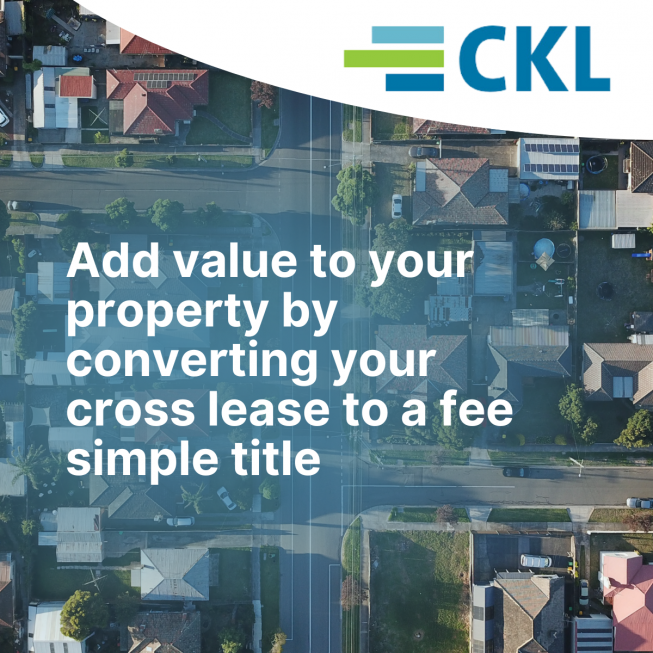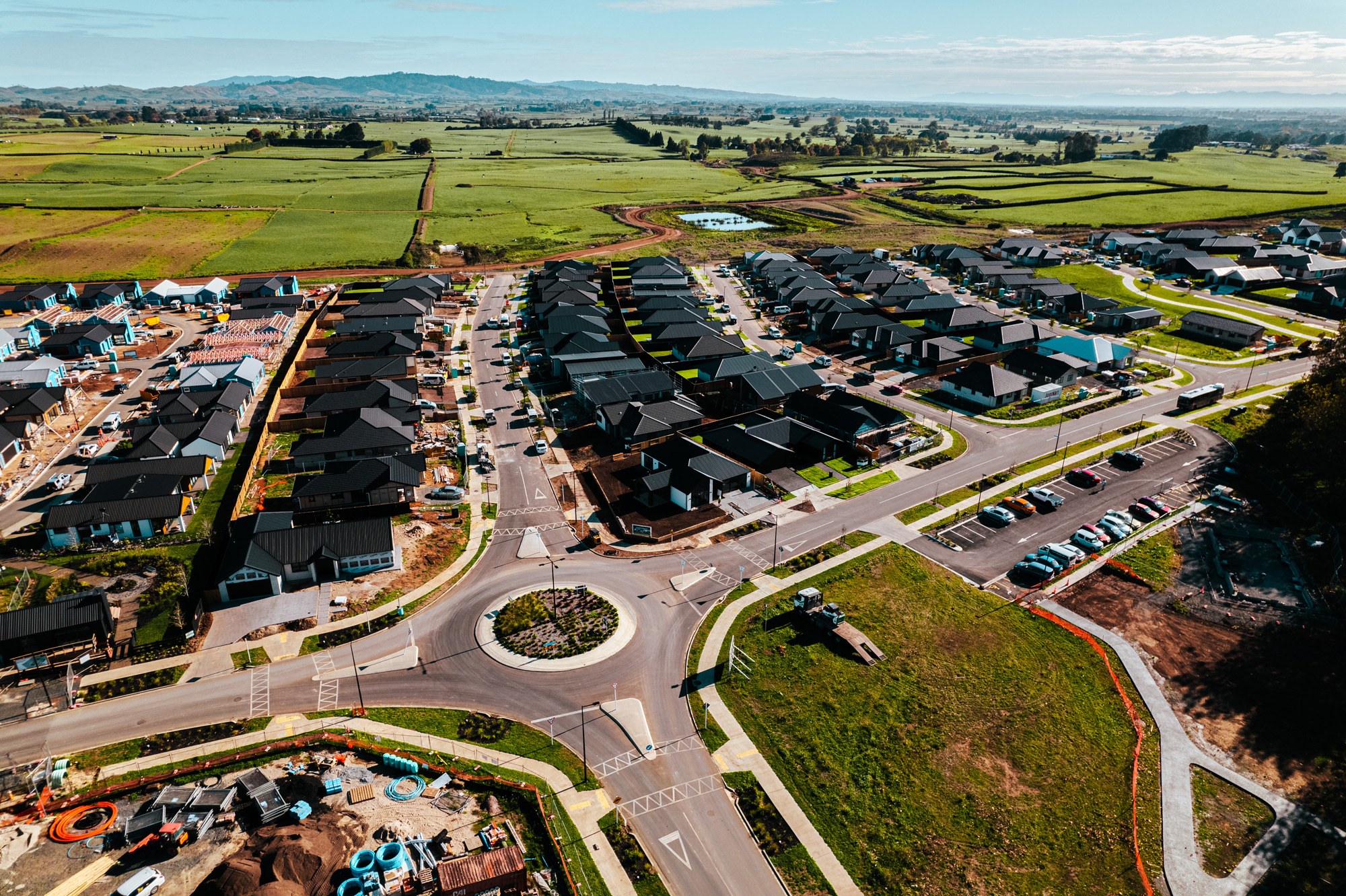Earlier in 2023, CKL director, Campbell Burrows, a Licensed Cadastral Surveyor, gave a presentation to the Auckland District Law Society that explains how you can add value to your property by converting your cross lease to a fee simple title. This article summarises his key points.
Changes to planning rules that allow up to three dwellings, three storeys high, on most freehold titles in New Zealand’s biggest cities have created a development opportunity for property owners wanting to develop their land. An opportunity that many cross-lease owners will miss out on.
Cross-leases were invented in the 1960s as a loophole in planning rules to get around subdivision restrictions. There are about 216,000 cross-lease property owners in New Zealand and 100,000 of them are in Auckland.
The challenges with cross-leases have been known for a long time and the value of these properties (often much less than traditional freehold titles) reflect that.
Cross-leases could now become a restraint on future development, having the potential to hold up housing intensification plans, leaving cross-lease owners frustrated on both sides of the fence.
What is a cross-lease?
At its most basic, a cross-lease is a type of land ownership held between multiple people, each leasing a portion of the land from each other. It is often used where there is a shared driveway or other shared amenity, and the lease will often come with development restrictions on that land.
This form of ownership places certain restrictions on each owner in relation to not only the development of the land, but also to any improvements or alterations they may wish to make to their property. It requires the cross-lease owner to obtain written approval from the other cross-lease owner or owners for work that could be as simple as adding a deck, erecting a carport or building a pergola near the BBQ.
The challenges of cross-lease ownership.
A cross-lease structure can work well for property owners if they have a great relationship with their neighbour. But what if things aren’t that rosy? Or what if the neighbour lives offshore and is difficult to contact? At best, gaining approval for any changes or alterations to a property may hold up building works and planned development timeframes. And, at worst, progressing with any changes to a property without gaining prior approval may result in structures being removed at the owner’s expense.
When selling a cross-lease property, there may also be additional headaches to deal with. If alterations have not been approved by all parties, the property itself may not have been resurveyed and a new cross-lease plan issued, making the old cross-lease title defective.
A fee-simple structure may be the answer.
With all this taken into consideration, many property owners are opting to convert cross-lease titles to a fee-simple structure in order to make it easier to develop their land or even sell their property.
The cost of converting to a fee-simple structure can also often be recouped with an increased sales figure. The Property Institute of New Zealand estimates homeowners of fee-simple title properties may achieve a sale price of 7 to 18 per cent above that of a cross-lease title.
Converting to a fee-simple structure is not all straight forward, however. All owners of the cross-lease must agree to the conversion before proceeding, including how they will apportion the costs for completing the process. The potential to share these costs between the parties provides a greater chance of realising more value in the property.
With new planning rules allowing three dwellings up to three storeys high on medium density zoned land however, not all cross-lease owners are thrilled at the prospect of intensification while others see an opportunity. Case law is still emerging, including around the enforceability of cross-leases, and their conversion to other forms of tenure like fee-simple.
How to convert a cross-lease to fee-simple.
To convert a cross-lease to a fee-simple title, resource consent to subdivide is required. Thankfully councils have made what was once a complicated process much simpler. In practical terms, cross-lease conversions are treated as an “existing use right” and the consent process is mainly about making sure the new title arrangement is fit for purpose. This generally requires the new proposed boundaries to follow the existing cross-lease exclusive use delineations and for right-of-way easements to replace common areas for access.
In some cases where shared driveways and services are in place, it may be necessary to bring the property up to the current Council code of practice standards.
A surveyor can manage the consenting process, ensure compliance with resource consent conditions, prepare the new survey plan and work with lawyers to register the new fee-simple titles.
It is certainly something to consider in a bid to avoid the challenges that can come with cross-lease ownership.
To see Campbell’s full presentation about cross leases, watch the video below.





